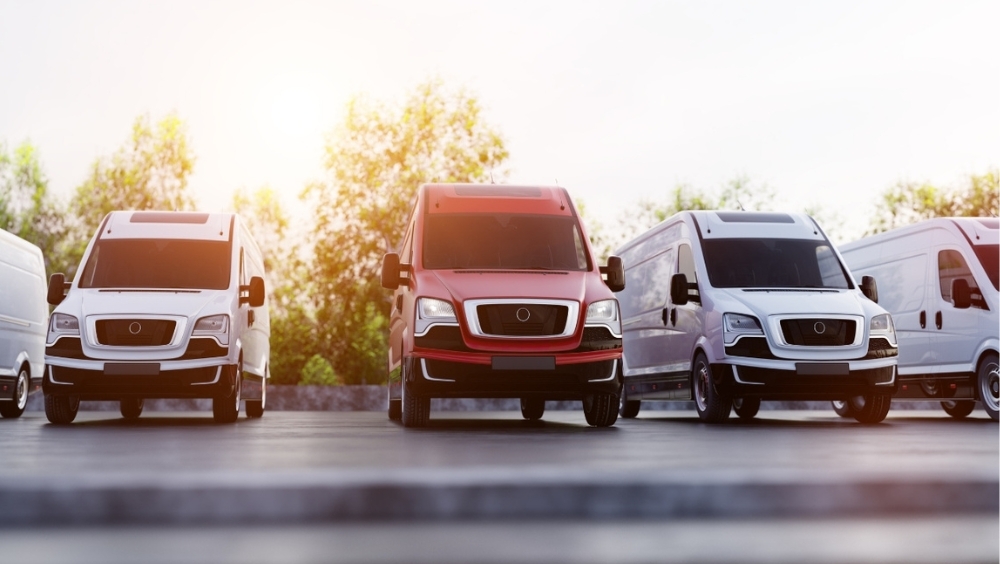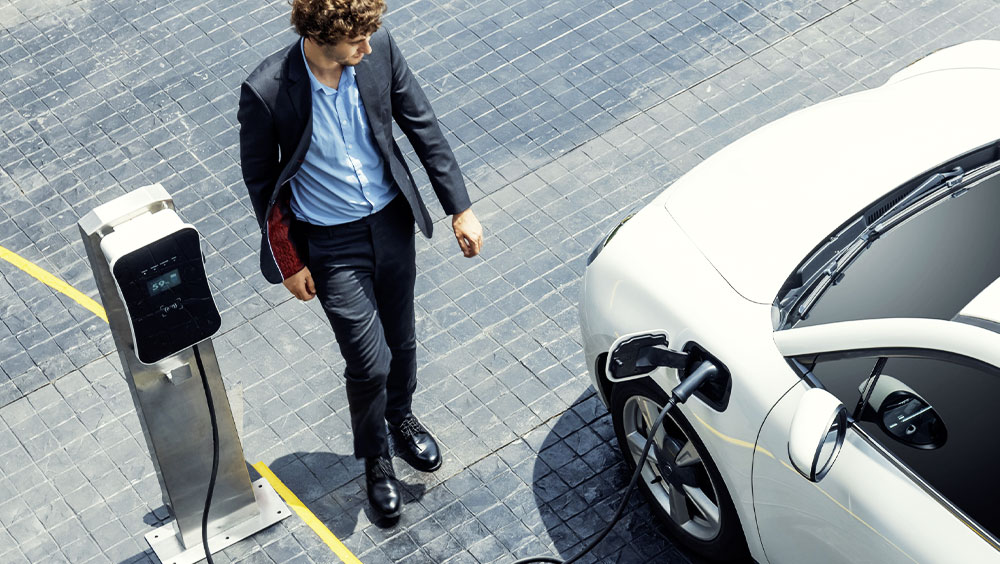Fleet management: How digital billing solutions are driving e-mobility in companies

The growing number of e-vehicles in company fleets requires precise recording and billing of the charging current.
Fleet electrification is becoming increasingly important for companies that are moving towards sustainability and future viability. In view of the growing requirements of the CSRD (Corporate Sustainability Reporting Directive) and the goal ofreducing CO2, you may be faced with the task of efficiently converting your fleet to electric vehicles . Leave nothing to chance and make an intelligent software solution with a digital billing system your co-pilot on the road to e-mobility .
Future-oriented fleet management: why electrifying your fleet is worthwhile
Are you about to make the decision to electrify your fleet ? E-mobility not only offers you the opportunity to drastically reduce your CO2 emissions, but also to make considerable cost savings . With a fleet of 50 e-vehicles, for example, you can save up to 75 tons of CO2 per year - that's equivalent to the annual electricity consumption of a medium-sized office building!
.png?width=1500&height=2100&name=Infografik%20Blog%20(1500%20x%202100%20px).png)
Electromobility: using digitalization and overcoming the challenges of fleet electrification
Every major transformation brings challenges - and fleet electrification is no exception. With the right tools, you can turn your fleet into a catalyst for innovation and more efficient processes in your company. Consider e-mobility as an opportunity to rethink and optimize your processes. Let's take a look together at the key aspects that companies need to consider when switching to electromobility:
Complex charging infrastructure
In contrast to the usual refueling of combustion engines, charging electric cars requires a well thought-out infrastructure. Instead of a simple filling station, you now need a network of charging stations that need to be strategically placed and intelligently connected. This new complexity enables optimized energy use and can lead to cost savings in the long term.
Flexible charging options
One of the greatest strengths of e-mobility is the variety of charging options . Ideally, employees can use public charging points as well as home charging and charging points at their company locations. Although this flexibility requires comprehensive measures as part of site electrification, it also offers enormous benefits for employee satisfaction and fleet efficiency.
Automated billing
The precise recording and billing of charging processes at various charging points can seem intimidating at first. However, it is precisely this necessity that you can use as a driver for the digitalization and optimization of your fleet management. Modern billing systems help you to present all costs transparently, view valuable data and make informed decisions.
Fleet management software: transparent billing system and charging solutions for companies
The electrification of vehicle fleets is not only a decision for more sustainability in companies, but also a response to the growing demands of the modern business world. For modern fleet management, you need effective solutions that optimize both the administration and billing of charging processes. Modern billing systems offer you the functions you need to manage your e-fleet and charging infrastructure perfectly:
- Centralized management of charging points:
All charging stations can be clearly managed and assigned to different user groups. - Efficient charging card management:
Similar to conventional fuel cards, charging cards for e-cars can be managed centrally. - Automated billing:
All charging processes are automatically recorded and centrally billed, which significantly reduces administrative work. - Support for open standards:
The use of the OCPP standard (Open Charge Point Protocol) enables a flexible and future-proof charging infrastructure. - Integration of home charging:
Employees' private charging stations can be easily integrated into the system.
Advantages of home charging for companies and employees
In practice, charging company vehicles at home is proving to be an extremely attractive option for companies and their employees alike. This solution offers a number of advantages that ensure greater satisfaction on both sides:
- Maximum convenience for employees through charging stations at home
Would you like your employees to start the working day relaxed every morning with a fully charged electric vehicle? Home charging makes exactly that possible. The electric cars can be conveniently charged overnight without any additional time being required. This maximizes the available range and eliminates the stress of having to find a place to charge during the day.
.jpg?width=1000&height=564&name=Artikel-Bilder%20(2).jpg)
- Home charging is cheaper than public charging
An often overlooked but significant advantage of home charging is the cost saving. While public charging stations in Germany charge an average of €0.58 per kilowatt hour, the price for home charging is often only between €0.26 and €0.37 per kilowatt hour. This difference quickly adds up to considerable sums.
- Savings potential for companies
The figures speak for themselves: with a fleet of 50 electric vehicles, companies can save up to €18,000 a year through consistent home charging. This savings potential is a powerful argument for fleet managers who are looking for ways to optimize operating costs without compromising on performance or employee satisfaction.
Home charging of electric vehicles therefore combines convenience, cost efficiency and practical benefits in one solution. It enables companies to operate their fleets more sustainably and cost-effectively, while making employees' everyday lives easier. In times when both ecological and economic factors are playing an increasingly important role, home charging is proving to be an innovative strategy for modern companies.
How to optimize your fleet management with a smart billing system
For sustainable success, it is crucial that companies pay attention to the following aspects when introducing a digital billing system for their e-fleet:
- Rely on open systems for maximum flexibility
In the rapidly evolving world of e-mobility, flexibility is invaluable. OCPP-compatible (Open Charge Point Protocol) systems are the gold standard here. They enable the seamless integration of different charging solutions as well as the necessary adaptability for future developments.
A particular advantage of open systems is the integration of employees' private charging stations. With OCPP support , existing wallboxes can be easily integrated into the company infrastructure. This creates a future-proof charging infrastructure and enables companies to easily change providers if necessary without having to replace the entire infrastructure.
- Optimize your processes for smooth workflows
Establish clear and efficient processes for all aspects of your e-fleet management. This includes:
- Structured employee advice on the use of electric vehicles
- Simple handling when uploading electricity contracts and mileage data
- Efficient processes for the installation of wallboxes
Well-structured processes increase acceptance among your employees.
- Automate the billing of all charging processes
Use the full potential of specialized software solutions to automate your billing. From recording all charging processes to billing - automation significantly reduces the workload in fleet management and minimizes sources of error. - Take advantage of expert advice for legally compliant solutions
Electromobility is subject to constant change. By consulting experts, you can ensure that your chosen solution is not only technically advanced, but also legally compliant and future-proof. This will protect you from costly mistakes and ensure compliance.
Conclusion
Switching to electric vehicles gives companies the opportunity to actively contribute to climate protection and reduce costs at the same time. A powerful billing system is the basis for efficient fleet management. Such a solution simplifies the management of charging points, automates billing processes, seamlessly integrates various charging options and keeps an eye on the needs of employees. With the right strategy and the right digital tools, the electrification of your fleet will become a successful model for your mobility of tomorrow.
You May Also Like
These Related Stories


